Occupational Safety Training in Camera Manufacturing
99,000 ₫
Note: The above price is calculated for one person, the price may fluctuate depending on the number of trainees participating in the course and depending on market movements. For more accurate pricing support, please refer to the quotation table or contact our consulting staff directly.
Occupational safety is an important issue in camera manufacturing factories and needs to be addressed promptly to ensure the health and safety of workers, and to enhance the reputation of businesses. The Occupational safety training course is one of the effective solutions to raise awareness about accident prevention for workers participating in camera manufacturing.
Table of Contents
Toggle1. Overview of Cameras
a. What is a Camera?
A camera is an imaging device used to capture and record images or videos. This device can be integrated into mobile phones, computers, or standalone devices such as digital cameras or video recorders.
Cameras are classified based on usage, size, resolution, image quality, shooting speed, light sensitivity, and many other factors. Cameras are used in various fields such as photography, advertising, security, surveillance, healthcare, science, sports, and entertainment.

b. Machinery Used in Camera Production
The process of manufacturing and assembling cameras involves multiple stages and various types of machinery. Some of the machines used in camera production and assembly include:
- Molding Press: Used to mold small camera components such as buttons and casings.
- CNC Lathe: Used for precision machining of metal camera components, such as lens parts.
- Laser Cutter: Used to cut LCD display panels for cameras.
- Plastic Injection Molding Machine: Used to produce plastic components of cameras, such as casings, waterproof locks, lens covers, etc.
- Wire Processing Machine: Used to manufacture wiring components and cables connecting various camera parts.
- Laser Welding Machine: Used to weld metal parts of cameras, ensuring precision and durability.
- 3D Printer: Used to produce intricate camera components, such as aspherical lens elements.
- Automatic Assembly Machine: Used to assemble camera components, ensuring accuracy and efficiency in production.

c. Camera Manufacturers in Vietnam
Currently, Vietnam does not have many well-known camera brands. However, some popular cameras widely used in Vietnam include:
- Hikvision: One of the world’s largest brands in security surveillance, providing security cameras, monitoring, and protection solutions.
- Dahua: Another leading brand in security cameras, offering comprehensive surveillance solutions for users.
- KBVision: A camera brand from South Korea, produced in Vietnam with good quality and affordable prices, meeting the monitoring needs of many customers.
- Vantech: A Taiwanese camera brand providing professional surveillance solutions for buildings, factories, schools, offices, and other businesses.
- Avtech: A Taiwanese surveillance camera brand offering products and solutions for buildings, offices, private homes, and other businesses.
d. Specific Jobs in a Camera Production Factory
Group 1
- CEO, Deputy CEO, and department heads in the camera production factory.
Group 2
- Safety Officers: Manage safety in the factory, design safety procedures, supervise and ensure workers follow safe working protocols.
Group 3
- Purchasing: The factory must procure necessary components for camera production, including lenses, image sensors, displays, and other components.
- Component Manufacturing: Components are produced at other factories before being transported to the camera production facility.
- Assembly: Components are assembled into a complete camera. Assembly workers place the components in their correct positions and secure them together.
- Quality Control: After assembly, cameras are tested to ensure they function correctly. Any defective components are repaired or replaced.
- Packing: After quality inspection, cameras are packed in boxes and stored in the warehouse for shipment to stores and customers.
Group 4
- Office, service, sales, and marketing tasks.
- Production management, quality management, human resources management, material management, financial accounting management.
- Design: The design team determines the camera’s shape, functions, and features. They also plan the layout of camera components, including lenses, image sensors, and displays.

e. Popular Camera Types on the Market
Currently, there are many popular types of cameras, depending on usage and technical specifications. Some of the widely used camera types include:
- Surveillance Cameras: Used for monitoring and managing security in public areas, homes, companies, factories, stores, hospitals, schools, etc. These cameras often feature night vision, water resistance, dust resistance, and continuous or motion-activated recording.
- Dash Cameras: Mounted in cars to record trips, assist in accidents, or provide evidence in vehicle collisions.
- Action Cameras: Designed for sports activities such as surfing, climbing, hiking, swimming, boating, etc. These cameras are compact, waterproof, shockproof, with wide-angle recording and anti-shake capabilities.
- DSLR Cameras: Single-lens cameras mainly used for professional photography or enhanced image quality. They allow interchangeable lenses and offer features like manual mode, continuous shooting, video recording, etc.
- Mirrorless Cameras: Similar to DSLRs but more compact, also supporting interchangeable lenses and many features like DSLRs. They are lighter and suitable for travel, vlogging, family photography, etc.
- Mobile Phone Cameras: Integrated into smartphones, increasingly equipped with higher resolution and features such as portrait mode, night photography, and bokeh effect.
2. Overview of Occupational Safety Training for Camera Production
This article focuses on Group 3 because Group 3 directly participates in the production process and is exposed to the highest occupational safety risks. For other groups, refer here.
a. What is Group 3 Occupational Safety Training?
- Group 3 occupational safety training consists of sessions that provide workers with awareness of how to prevent workplace accidents.
- The training helps workers recognize and avoid hazards, minimizing the risk of accidents during work.
REGISTER FOR OCCUPATIONAL SAFETY TRAINING
b. Training Duration
Initial Safety Training Duration
- Total training time is at least 24 hours, including exam time.
- 8 hours of theory on policies, safety, and labor hygiene laws.
- 8 hours of basic occupational safety and hygiene theory.
- 4 hours of specialized occupational safety theory.
- 2 hours of practical exercises in specialized training.
- 2 hours of theoretical exams at the end of the course.
The training center may divide the schedule into multiple sessions based on workers’ availability. Typically, there are 6 training sessions conducted over 3 days, provided the manufacturer can arrange consecutive learning sessions.
Periodic Safety Training Duration
- Before the occupational safety card expires, workers who wish to renew it must complete periodic occupational safety training, with the periodic training duration being at least 50% of the initial training duration.
Explanation: The total periodic safety training duration is at least 12 hours, including exam time. After completing the periodic training and passing the test, the worker will receive a renewed occupational safety card.
c. Training Content
| No. | TRAINING CONTENT | TRAINING HOURS | |||
| Total | Including | ||||
| Theory | Practice | Exam | |||
| I | Policies and Occupational Safety Laws | 8 | 8 | 0 | 0 |
| 1 | Overview of legal documents related to occupational safety and hygiene. | 6 | 6 | ||
| 2 | Standards and technical regulations on occupational safety and hygiene. | 1 | 1 | ||
| 3 | Specific regulations by government authorities on occupational safety when constructing, expanding, or renovating facilities, and handling machinery, equipment, materials, or substances with strict safety requirements. | 1 | 1 | ||
| II | Basic Occupational Safety Knowledge | 8 | 8 | 0 | 0 |
| 1 | Basic knowledge of workplace hazards and risks. | 4 | 4 | ||
| 2 | Methods to improve working conditions. | 1 | 1 | ||
| 3 | Safety culture in production and business. | 1 | 1 | ||
| 4 | Rights and obligations of employers and employees; occupational safety policies; duties of safety officers. | 1 | 1 | ||
| 5 | Safety rules, signage, use of safety equipment and personal protective equipment; first aid and occupational disease prevention skills. | 1 | 1 | ||
| III | Specialized Training Content | 6 | 4 | 2 | 0 |
| Comprehensive knowledge of machinery, equipment, hazardous substances; risk analysis, safety management, and safe operating procedures for equipment and hazardous substances. | 6 | 4 | 2 | ||
| IV | End-of-Course Safety Exam | 2 | 2 | 0 | 0 |
| Total | 24 | 22 | 2 | ||
See more training content for all 6 groups
d. Occupational Safety Card
After completing the occupational safety training and passing the exam, workers will be issued an Occupational Safety Card (commonly called Group 3 Safety Certificate).
The Group 3 safety card includes information such as full name, date of birth, job, and work environment. It also records training duration, official stamp, and signature confirming completion.
According to the regulations on issuing safety cards under Clause 2, Article 24 of Decree 44/2016/ND-CP, there are two cases:
- If the employer and employee have an employment contract, the employer must sign and stamp the safety card for the trained Group 3 worker after completing training and passing the exam.
- If the worker is freelance or temporary with no employment contract, the training unit must sign and stamp the safety card after the worker completes the training and passes the exam.

3. Identifying Hazards Affecting Workers in Camera Production
Some potential hazards for workers during camera production may include:
- Fire and explosion risk: Since production processes involve electricity, heat, and chemicals, the risk of fire and explosion is very high. This can lead to injuries or even death if proper safety measures are not implemented.
- Dust and chemicals: Camera production processes may generate dust and toxic chemicals such as heavy metals, harmful chemicals, and fumes. These substances can cause health issues such as breathing difficulties, pneumonia, cancer, and eye problems.
- High voltage: Electronic devices in cameras may use high and dangerous voltages for workers. Employees must be trained to handle emergency situations related to electrical safety.
- Workplace accidents: Camera production machinery may cause accidents such as being thrown, collisions, cuts, punctures, crushing, burns, or scratches. This can result in injuries, wounds, or even fatalities.
- Psychological health impacts: Working in a production environment may cause psychological pressure on employees. Stress and pressure can lead to mental health issues such as depression, anxiety, stress, and sleep difficulties.
4. Common Workplace Accidents in Camera Production
Common workplace accidents in camera production may include:
- Neck and shoulder injuries: When working in twisted postures, reaching above the head, or bending excessively to assemble components and motors.
- Eye strain and fatigue: From looking at LCD screens or small components during assembly, inspection, and repair of cameras.
- Electric shock: When handling electronic components and motors, there may be electrical leakage or protection failure, leading to electric shock.
- Burns: Components can become very hot during use, especially during design and production, posing a burn risk to employees.
- Chemical poisoning: Using chemicals in camera production can be harmful to workers’ health, especially if protective equipment is not used correctly.
- Hearing damage: Employees may experience ear damage from high noise levels produced by machinery and equipment in the factory.
- Physical accidents: Physical accidents such as collisions, impacts, and falling heavy objects may occur during production and transportation of cameras.

5. Safety Measures in Camera Production
Safety measures in camera production include:
- Wearing protective gear: Employees in camera production factories should wear protective equipment such as helmets, safety glasses, aprons, gloves, and safety shoes to protect the head, eyes, hands, feet, and body from potential hazards during production.
- Occupational Safety Training: Employees need to be trained and instructed on how to safely and effectively use machinery and equipment in camera production.
- Using protective devices: Camera production machinery should be equipped with protective devices to prevent workplace accidents. Employees must use these protective devices correctly.
- Using support equipment: To minimize accident risks, camera production employees should use support equipment such as cranes, hoists, and forklifts to move heavy materials and reduce manual lifting forces.
- Regular maintenance and equipment checks: Camera production equipment must be inspected regularly to ensure worker safety. Employees must comply with safety regulations and conduct routine maintenance to prevent accidents.
- Periodically conduct occupational environment monitoring in factories, collect and analyze harmful factors to employees, and adjust to reduce hazards to prevent occupational diseases.
6. Benefits of Occupational Safety Training for Camera Production
An Toan Nam Viet provides businesses with the following benefits upon completing occupational safety training courses in accordance with Decree 44/2016/ND-CP on Occupational Safety and Hygiene for companies, factories, and enterprises:
- Workers can recognize potential workplace hazards and take preventive measures to avoid accidents.
- Businesses can establish risk prevention measures in production, operation, and maintenance processes.
- Reduce costs associated with potential workplace safety risks.
- Continuous production without interruptions improves labor productivity and product quality.
- Ensure compliance with labor safety laws, avoiding legal risks.
- Enhance the company’s reputation and professionalism, thereby boosting the brand image.
Nam Viet’s training courses are designed to protect individuals from external risks, helping them avoid injuries or, in severe cases, death.
REGISTER FOR OCCUPATIONAL SAFETY TRAINING SERVICE
7. Customer Feedback after Completing Camera Production Safety Training
An Toan Nam Viet has many years of experience accompanying businesses in Vietnam, especially in southern provinces. This responsibility is invaluable, which is why Nam Viet’s Occupational Safety Training is increasingly professional. Our growth is fueled by both positive feedback and suggestions from businesses. Below are feedbacks from partners we have served.
Bac Nam E&C Investment Construction Joint Stock Company
“My first experience with An Toan Nam Viet was very surprising due to the 24/7 enthusiastic support from the consulting team. Class organization was quick and convenient for our company. Thank you very much for Nam Viet’s service!”
Hoa Dat Construction and Trading Joint Stock Company
“Nam Viet’s service greatly helped us simplify occupational safety and complete safety documentation for work processes. The consulting team responded promptly to our questions. Five stars for Nam Viet.”
See more customer interviews after using our services of An Toan Nam Viet
8. An Toan Nam Viet’s Occupational Safety Training Capability
An Toan Nam Viet is a reputable and high-quality occupational safety training center in Vietnam. Training sessions are continuously conducted at production workshops, factories, or construction sites across all 63 provinces in Vietnam.
REGISTER FOR OCCUPATIONAL SAFETY TRAINING SERVICE
Occupational Safety Training License
- An Toan Nam Viet has been inspected and certified by the Department of Occupational Safety under the Ministry of Labor – Invalids and Social Affairs, granting certification to operate occupational safety training. This further strengthens our training capability.

Materials and Lectures
- Before materials are used in occupational safety training courses, they are reviewed and approved to ensure accurate knowledge and practical effectiveness.
- Instructors’ teaching methods follow An Toan Nam Viet’s standards, developed by experts in occupational safety training to maximize knowledge retention.
Facilities
- Controlling classroom factors affecting training increases teaching efficiency and learning outcomes.
- Our training facilities provide spacious classrooms meeting standards for size, lighting, and training equipment.
9. Nationwide Reputable Occupational Safety Training Center
At An Toan Nam Viet, we always prioritize our professional dedication to occupational safety training. For us, imparting knowledge on self-protection to workers so they can stay safe in their livelihood is also contributing to the country’s development.
To ensure effective training, we meticulously prepare every detail, from tools, teaching equipment, curriculum, materials, to audio and lighting.
Our occupational safety instructors are experts with many years of experience. They have even conducted research on identifying hazards in various industries and ways to prevent them.
The lectures are based on real-world experience and presented in an engaging, easy-to-understand way for workers. This allows learners to feel comfortable while absorbing knowledge. All teachings strictly comply with Decree 44/2016/ND-CP.
As a result, workers learn numerous preventive measures and ways to protect themselves, and apply them appropriately in their actual work.
Our Occupational Safety Training Center proudly provides professional, reliable occupational safety training services with the following advantages:
- Competitive training costs while maintaining high training quality.
- Flexible training schedules to match company production needs.
- Quick certification procedures in accordance with legal regulations.
- Experienced instructors with many years in the profession.
- Classrooms are controlled to optimize teaching efficiency and learners’ knowledge absorption.
- Lectures are tailored to occupational safety needs of enterprises.
- An Toan Nam Viet works with dedication and professionalism to support customers accurately and promptly.

10. Additional References for Camera Production Occupational Safety Training
- Camera Production Occupational Safety Materials
- Occupational Safety Training Materials Set
- Occupational Safety Training Test Set
- Camera Production Occupational Safety Training Curriculum
- Camera Production Occupational Safety Quiz
1 review for Occupational Safety Training in Camera Manufacturing
No comments yet

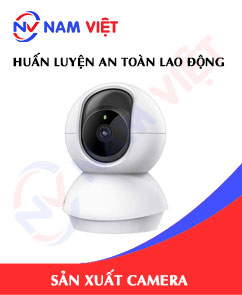
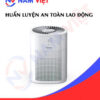
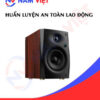





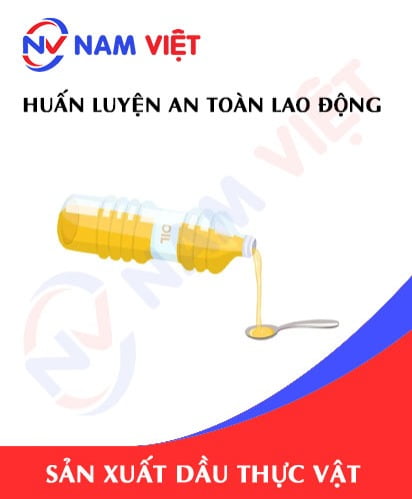



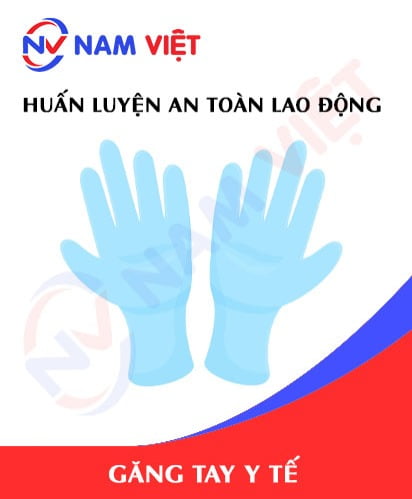

namchinh.haiphong341
Dịch vụ an toàn chuyên nghiệp